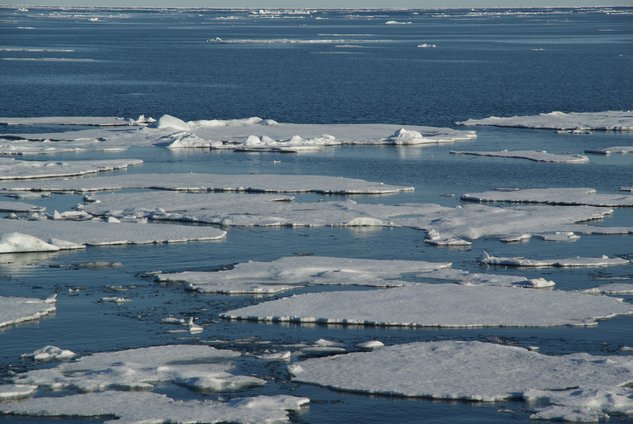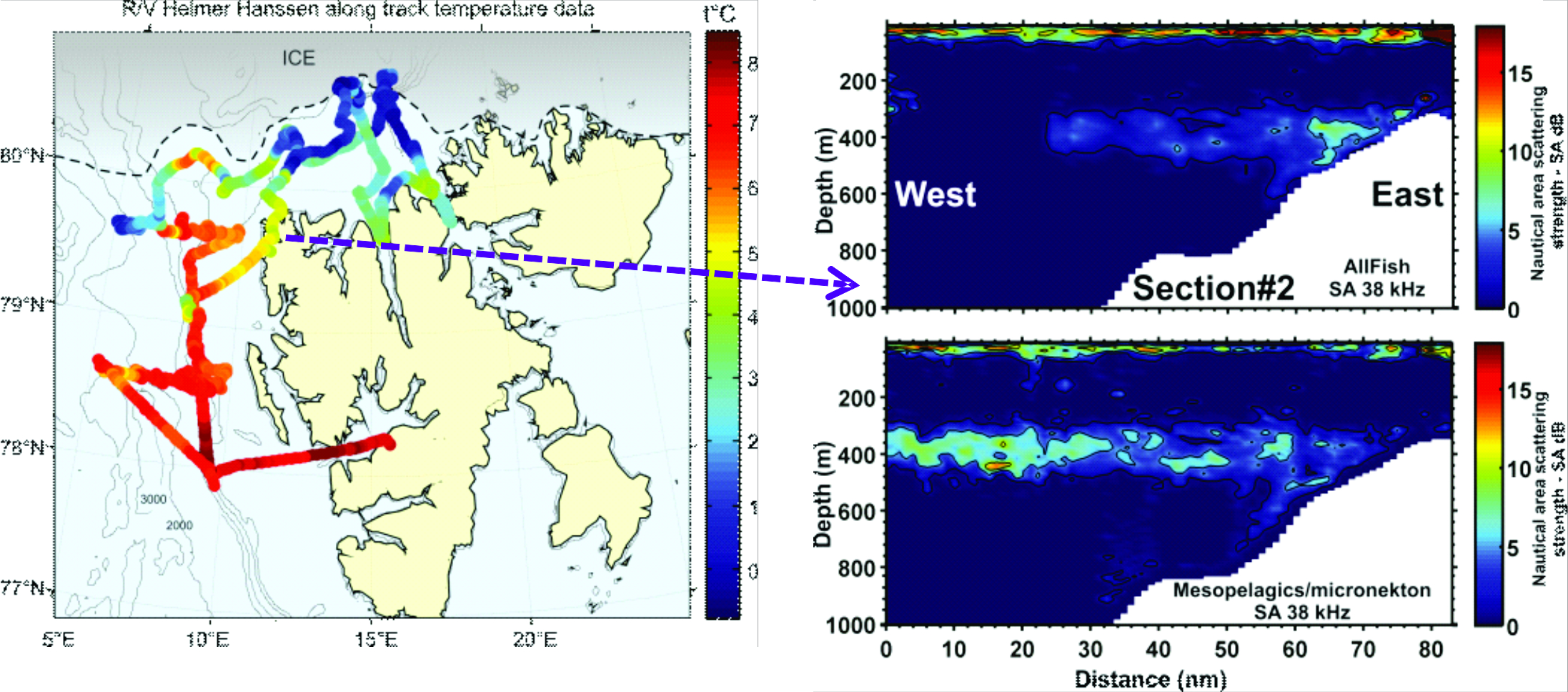
Baseline acoustic scattering structures - potential indicators to Arctic Ecosystem Change?
Data from the 2014 SI_ARCTIC survey document the presence of a deep scattering layer in the Svalbard region. This work is contributing to an understanding of how strong inflows of warm Atlantic Seawater and subarctic biota are affecting the Arctic ecosystem.

The first SI_ARCTIC cruise aboard the R/V Helmer Hanssen took place west and north of Svalbard in August/September 2014. Baseline information was collected on physical, chemical, and biological conditions in the ice free and to some extent drift ice.
Strong patchy scattering between the surface and about 50 m occurred throughout most of the area coinciding with mixed groups of organisms including 0-group Sebastes spp., copepods, amphipods, and krill. Strong scattering between 300 and 500 m was dominated by larger fish (a.o. cod, haddock, redfish) close to the shelf/slope break and associated with the warm Atlantic Water (AW) moving north and north-east into the Arctic Basin and Mesopelagics / micronekton further offshore.
The abundance and changes in the species composition of the organisms constituting the layer is important for the understanding of how these organisms, many of them of a more southern origin, manage the transition to a more Arctic habitat, and how Subartic and tentatively Arctic forms might increase their presence further north and east.
The results from Knutsen et al. were presented at the ICES Symposium on Marine Ecosystem Acoustics, 25-28 May 2015, Nantes, France. Poster 52930.
